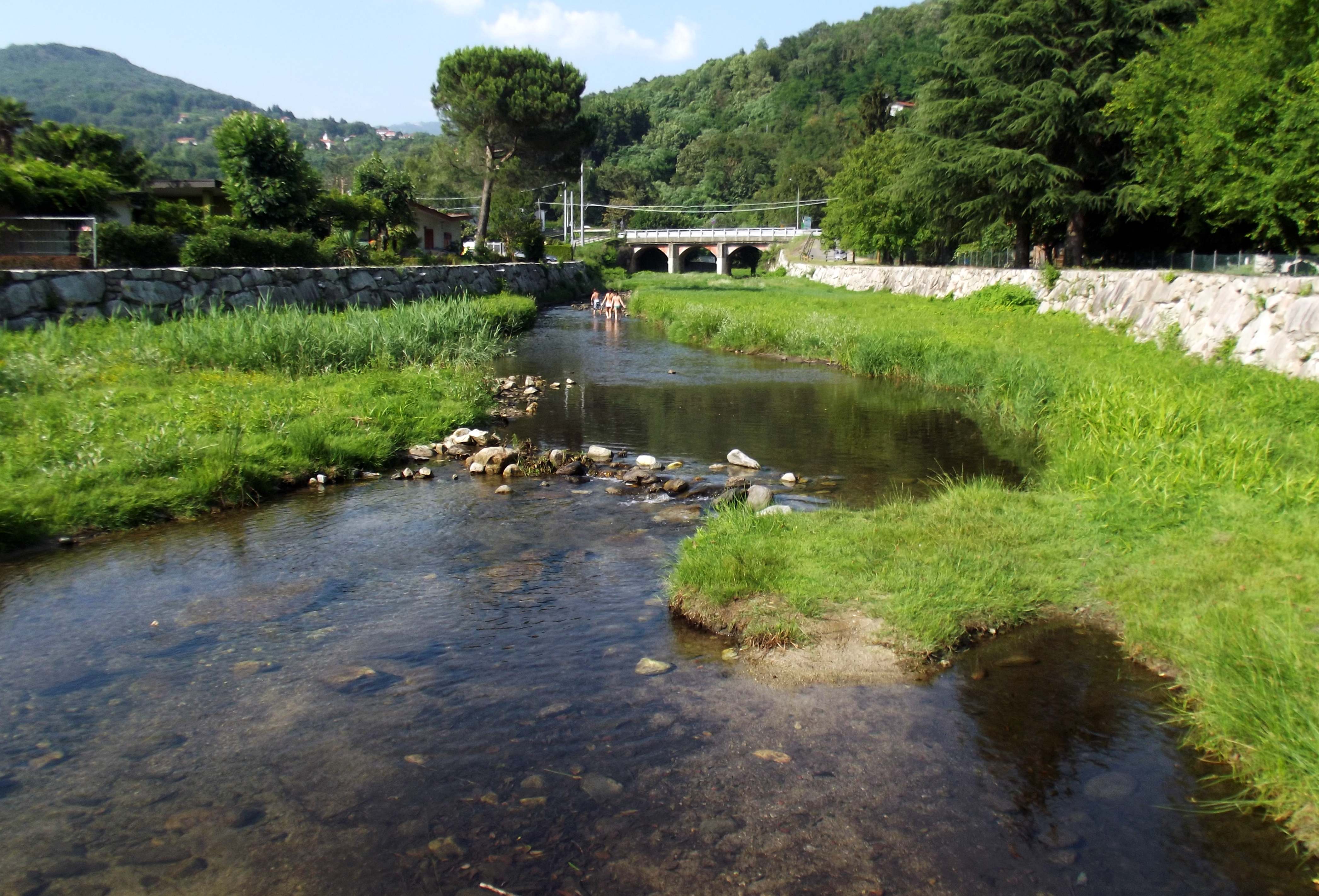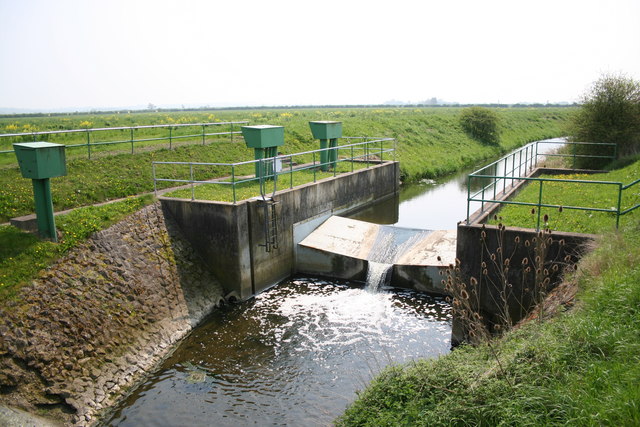|
Stream Order
The stream order or waterbody order is a Natural number, positive whole number used in geomorphology and hydrology to indicate the level of branching in a river system. There are various approachesKoschitzki, 2.3, pp. 12ff to the topology (mathematics), topological ordering of rivers or sections of rivers based on their distance from the source ("top down"Weishar, p. 30.) or from the confluence (hydrology), confluence (the point where two rivers merge) or river mouth ("bottom up"Weishar, p. 35.), and their hierarchical position within the river system. As terminology, the words "stream" and "branch" tend to be used rather than "river". Classic stream order The ''classic stream order'', also called ''John Tilton Hack, Hack's stream order'' or ''Gravelius' stream order'', is a "bottom up" hierarchy that allocates the number "1" to the river with its mouth at the sea (the main stem). Stream order is an important aspect of a drainage basin. It is defined as the measure of the ... [...More Info...] [...Related Items...] OR: [Wikipedia] [Google] [Baidu] |
Natural Number
In mathematics, the natural numbers are the numbers 0, 1, 2, 3, and so on, possibly excluding 0. Some start counting with 0, defining the natural numbers as the non-negative integers , while others start with 1, defining them as the positive integers Some authors acknowledge both definitions whenever convenient. Sometimes, the whole numbers are the natural numbers as well as zero. In other cases, the ''whole numbers'' refer to all of the integers, including negative integers. The counting numbers are another term for the natural numbers, particularly in primary education, and are ambiguous as well although typically start at 1. The natural numbers are used for counting things, like "there are ''six'' coins on the table", in which case they are called ''cardinal numbers''. They are also used to put things in order, like "this is the ''third'' largest city in the country", which are called ''ordinal numbers''. Natural numbers are also used as labels, like Number (sports), jersey ... [...More Info...] [...Related Items...] OR: [Wikipedia] [Google] [Baidu] |
Vltava
The Vltava ( , ; ) is the longest river in the Czech Republic, a left tributary of the Elbe River. It runs southeast along the Bohemian Forest and then north across Bohemia, through Český Krumlov, České Budějovice, and Prague. It is commonly referred to as the "Czech national river". Etymology Both the Czech name ' and the German name ' are believed to originate from the old Germanic words ' 'wild water' (compare Latin '). In the ' (872 AD) it is called '; from 1113 AD it is attested as '. In the ' (1125 AD) it is attested for the first time in its Bohemian form, '. Course The Vltava originates by a confluence of two rivers, the Teplá Vltava, which is longer, and the Studená Vltava, originating in Bavaria. From a water management point of view, the Vltava and Teplá Vltava are one river with single numbering of river kilometres. The Teplá Vltava originates in the territory of Kvilda in the Bohemian Forest at an elevation of , on the slope of the Čern� ... [...More Info...] [...Related Items...] OR: [Wikipedia] [Google] [Baidu] |
Robert E
The name Robert is an ancient Germanic given name, from Proto-Germanic "fame" and "bright" (''Hrōþiberhtaz''). Compare Old Dutch ''Robrecht'' and Old High German ''Hrodebert'' (a compound of '' Hruod'' () "fame, glory, honour, praise, renown, godlike" and ''berht'' "bright, light, shining"). It is the second most frequently used given name of ancient Germanic origin.Reaney & Wilson, 1997. ''Dictionary of English Surnames''. Oxford University Press. It is also in use as a surname. Another commonly used form of the name is Rupert. After becoming widely used in Continental Europe, the name entered England in its Old French form ''Robert'', where an Old English cognate form (''Hrēodbēorht'', ''Hrodberht'', ''Hrēodbēorð'', ''Hrœdbœrð'', ''Hrœdberð'', ''Hrōðberχtŕ'') had existed before the Norman Conquest. The feminine version is Roberta. The Italian, Portuguese, and Spanish form is Roberto. Robert is also a common name in many Germanic languages, including En ... [...More Info...] [...Related Items...] OR: [Wikipedia] [Google] [Baidu] |
Discharge (hydrology)
In hydrology, discharge is the volumetric flow rate (volume per time, in units of m3/h or ft3/h) of a stream. It equals the product of average flow velocity (with dimension of length per time, in m/h or ft/h) and the cross-sectional area (in m2 or ft2). It includes any suspended solids (e.g. sediment), dissolved chemicals like (aq), or biologic material (e.g. diatoms) in addition to the water itself. Terms may vary between disciplines. For example, a fluvial hydrologist studying natural river systems may define discharge as streamflow, whereas an engineer operating a reservoir system may equate it with outflow, contrasted with inflow. Formulation A discharge is a measure of the quantity of any fluid flow over unit time. The quantity may be either volume or mass. Thus the water discharge of a tap (faucet) can be measured with a measuring jug and a stopwatch. Here the discharge might be 1 litre per 15 seconds, equivalent to 67 ml/second or 4 litres/minute. This is an average meas ... [...More Info...] [...Related Items...] OR: [Wikipedia] [Google] [Baidu] |
Stream Gauge
A stream gauge, streamgage or stream gauging station is a location used by hydrologists or environmental scientists to monitor and test terrestrial bodies of water. Hydrometric measurements of water level surface elevation (" stage") and/or volumetric discharge (flow) are generally taken and observations of biota and water quality may also be made. The locations of gauging stations are often found on topographical maps. Some gauging stations are highly automated and may include telemetry capability transmitted to a central data logging facility. Measurement equipment Automated direct measurement of stream discharge is difficult at present. Mathematically, measuring stream discharge is estimating the volumetric flow rate, which is in general a flux integral and thus requires many cross-sectional velocity measurements. In place of the direct measurement of stream discharge, one or more surrogate measurements can be used as proxy variables to produce discharge values. I ... [...More Info...] [...Related Items...] OR: [Wikipedia] [Google] [Baidu] |
Hydrodynamics
In physics, physical chemistry and engineering, fluid dynamics is a subdiscipline of fluid mechanics that describes the flow of fluids – liquids and gases. It has several subdisciplines, including (the study of air and other gases in motion) and (the study of water and other liquids in motion). Fluid dynamics has a wide range of applications, including calculating forces and moments on aircraft, determining the mass flow rate of petroleum through pipelines, predicting weather patterns, understanding nebulae in interstellar space, understanding large scale geophysical flows involving oceans/atmosphere and modelling fission weapon detonation. Fluid dynamics offers a systematic structure—which underlies these practical disciplines—that embraces empirical and semi-empirical laws derived from flow measurement and used to solve practical problems. The solution to a fluid dynamics problem typically involves the calculation of various properties of the fluid, ... [...More Info...] [...Related Items...] OR: [Wikipedia] [Google] [Baidu] |
Map Scale
The scale of a map is the ratio of a distance on the map to the corresponding distance on the ground. This simple concept is complicated by the curvature of the Earth's surface, which forces scale to vary across a map. Because of this variation, the concept of scale becomes meaningful in two distinct ways. The first way is the ratio of the size of the generating globe to the size of the Earth. The generating globe is a conceptual model to which the Earth is shrunk and from which the map is projected. The ratio of the Earth's size to the generating globe's size is called the nominal scale (also called principal scale or representative fraction). Many maps state the nominal scale and may even display a bar scale (sometimes merely called a "scale") to represent it. The second distinct concept of scale applies to the variation in scale across a map. It is the ratio of the mapped point's scale to the nominal scale. In this case 'scale' means the scale factor (also called point scal ... [...More Info...] [...Related Items...] OR: [Wikipedia] [Google] [Baidu] |
Drainage Divide
A drainage divide, water divide, ridgeline, watershed, water parting or height of land is elevated terrain that separates neighboring drainage basins. On rugged land, the divide lies along topographical ridges, and may be in the form of a single range of hills or mountains, known as a dividing range. On flat terrain, especially where the ground is marshy, the divide may be difficult to discern. A triple divide is a point, often a summit, where three drainage basins meet. A ''valley floor divide'' is a low drainage divide that runs across a valley, sometimes created by deposition or stream capture. Major divides separating rivers that drain to different seas or oceans are continental divides. The term ''height of land'' is used in Canada and the United States to refer to a drainage divide. It is frequently used in border descriptions, which are set according to the "doctrine of natural boundaries". In glaciated areas it often refers to a low point on a divide where it is po ... [...More Info...] [...Related Items...] OR: [Wikipedia] [Google] [Baidu] |
Drainage Density
Drainage density is a quantity used to describe physical parameters of a drainage basin. First described by Robert E. Horton, drainage density is defined as the total length of channel in a drainage basin divided by the total area, represented by the equation D_=\frac. The quantity represents the average length of channel per unit area of catchment and has units \frac, which is often reduced to \left[L^\right]. Drainage density depends upon both climate and physical characteristics of the drainage basin. Soil Permeability (earth sciences), permeability (infiltration difficulty) and underlying rock type affect the runoff in a watershed; Permeability (earth sciences), impermeable ground or exposed bedrock will lead to an increase in Surface runoff, surface water runoff and therefore to more frequent streams. Rugged regions or those with high Terrain#Relief, relief will also have a higher drainage density than other drainage basins if the other characteristics of the basin are the s ... [...More Info...] [...Related Items...] OR: [Wikipedia] [Google] [Baidu] |
Hydrographical
Hydrography is the branch of applied sciences which deals with the measurement and description of the physical features of oceans, seas, Coast, coastal areas, lakes and rivers, as well as with the prediction of their change over time, for the primary purpose of safety of navigation and in support of all other marine activities, including economic development, security and defense, scientific research, and environmental protection. History The origins of hydrography lay in the making of charts to aid navigation, by individual mariners as they navigated into new waters. These were usually the private property, even closely held secrets, of individuals who used them for Commerce, commercial or military advantage. As transoceanic trade and exploration increased, hydrographic surveys started to be carried out as an exercise in their own right, and the commissioning of surveys was increasingly done by governments and special hydrographic offices. National organizations, particularly n ... [...More Info...] [...Related Items...] OR: [Wikipedia] [Google] [Baidu] |
Drainage Basin
A drainage basin is an area of land in which all flowing surface water converges to a single point, such as a river mouth, or flows into another body of water, such as a lake or ocean. A basin is separated from adjacent basins by a perimeter, the drainage divide, made up of a succession of elevated features, such as ridges and hills. A basin may consist of smaller basins that merge at river confluences, forming a hierarchical pattern. Other terms for a drainage basin are catchment area, catchment basin, drainage area, river basin, water basin, and impluvium. In North America, they are commonly called a watershed, though in other English-speaking places, " watershed" is used only in its original sense, that of the drainage divide line. A drainage basin's boundaries are determined by watershed delineation, a common task in environmental engineering and science. In a closed drainage basin, or endorheic basin, rather than flowing to the ocean, water converges toward the ... [...More Info...] [...Related Items...] OR: [Wikipedia] [Google] [Baidu] |






